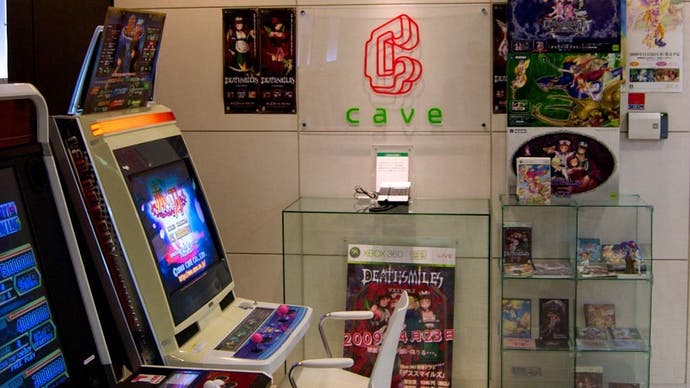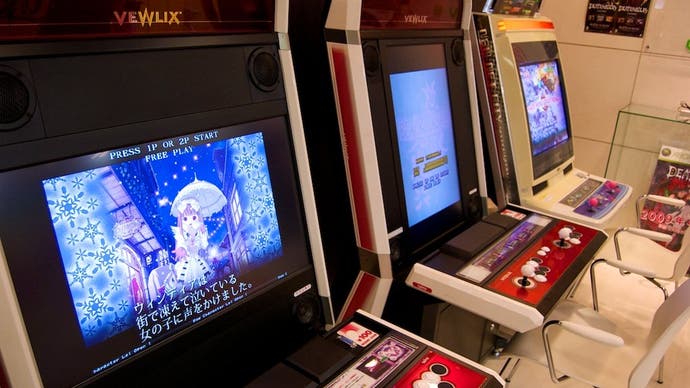Cave's Story
Bullet hell in downtown Tokyo.
It strikes me, on the way to the company's offices, that the inspiration for Cave's legendary gameplay style may be staring me in the face. Alighting from the train at Shinjuku I'm hurled into a mass of moving bodies, skipping from gap to gap in an attempt to get from one end of the world's busiest train station (3.4 million passengers per day, fact fans) to the other without being smacked in the ribs by a sharp-elbowed Japanese granny.
Sound familiar? Cave's designers, housed in an innocuous office building in the heart of Tokyo's most famous skyscraper district, run this gauntlet every day. In between rush hours, they craft fantastical versions of the same experience - helping to define a sector of the shooter genre so unique and bizarre it's been honoured with a name of its own: "bullet hell".
If you've never played a Cave game, "bullet hell" is a good summary. Firmly rooted in the scrolling shoot-em-ups which towered over the gaming landscape in the eighties and early nineties, Cave game series such as DoDonPachi, Espgaluda and DeathSmiles have picked up a devoted following of players.

These fans revel in the fast, ultra-precise control and extraordinary challenge of navigating a fragile craft through wave after wave of lethal bullets in fiendishly difficult patterns.
It's a fanbase firmly rooted in Japan's much-envied arcade scene, where most arcades boast at least a few bullet hell games - often occupied by a chain-smoking shooter fanatic, still as stone but for hands twitching over the controls and eyes flicking across the screen.
As Cave's own staff members acknowledge, the once-mighty Japanese arcades are in decline. But when one door closes another opens, and the company has found new success in porting its titles to Xbox 360 and the iPhone.
For all the studio's keen to explore new platforms, it's clear the arcade is still Cave's first love. That fact is driven home when you walk into the company's offices - through the innocuous lobby and up the dull elevator (probably sharing with an oblivious salaryman or office lady on the way), only to be unexpectedly deposited in front of Cave's own private arcade. This is a little row of game machines on free-play, standing in the kind of entrance hall most gamers can only dream of when buying lottery tickets.
After a quick play of the company's most recent arcade effort, a gloriously retro-looking side-scroller called Red Katana, we're ushered in to talk to programmer Takashi Ichimura. Over the years he's been responsible for a pretty major part of Cave's output, including the lion's share of the games' memorable bosses.

When we speak, Ichimura is hard at work on the Xbox 360 port of Guwange, Cave's 1999 arcade shooter. It's the company's first venture onto Xbox Live Arcade after several disc releases for the console.
Along with offering graphical upgrades, it's also the first Cave game to feature an online co-op mode - something which Ichimura admits was tough to implement. "There are a lot of bullets and objects on screen at the same time in Cave games," he tells us, perhaps attempting to win some kind of prize for understatement, "so a hundred per cent sync was basically impossible to realise. "But we've done our best to make it feel like you're playing in the most synced way possible."
It was, Ichimura says, a slow process to get the system right - but he hopes that the door is now open for more online modes to feature in future Cave games.
Online co-op is something you can't do in the 11 year-old arcade version of the game, of course. Plus, the 360 boasts rather more graphical prowess than the JAMMA arcade board on which Guwange was originally released. I put it to Ichimura that this means the 360 versions of Cave's games will be the definitive versions - better looking and more fully-featured.









